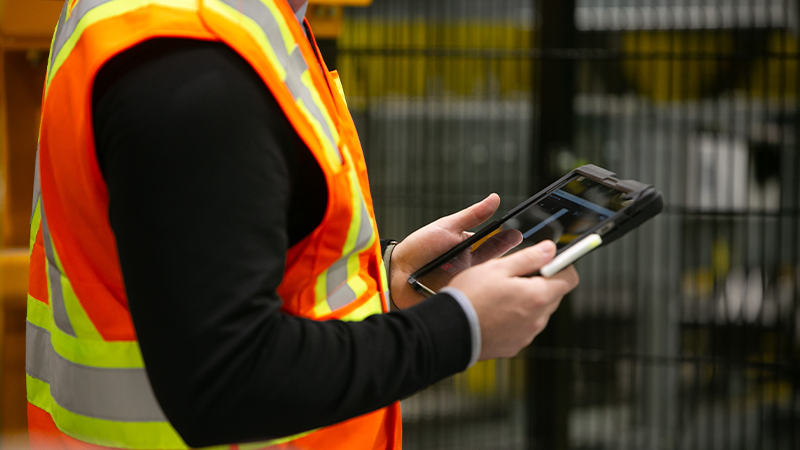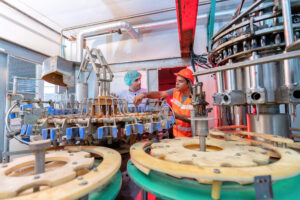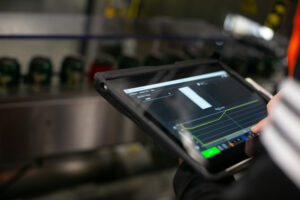
Implementing Predictive Maintenance In Beverage Manufacturing
Introducing Predictive Maintenance
Beverage manufacturing plants face a constant battle of working with high speed equipment, with high yields that must maintain stringent compliance standards. The pressure of maintaining OEE with the looming fear of equipment failure or product damage makes for a high cost, inefficient and stressful work environment.
Thankfully, new technologies and the development of innovative software tools have provided the opportunity for plants to proactively manage these known risks and reduce the occurrence of unplanned downtime, equipment part costs and waste. As these technologies evolve and become more widely adopted, companies are seeing the value of these tools to reduce their environmental impact while saving costs.
Challenges to Consider
While the true impacts of these solutions might not be as apparent until the system is already implemented, let us look at some of the costs and challenges that beverage facilities must bare:
- Part wear and tear under high loads due to high speeds
- Equipment malfunctioning due to environmental conditions (temperature, humidity etc)
- Maintained sanitation and cleanliness to ensure GMP compliance
- Quality audits that could significantly impact brand reputation
In addition to this, when issues do occur, there is an added impact to daily operations with prolonged downtimes until the root cause has been identified, product damage and waste, emergency shipping of parts with added express shipping costs and general lost time and resources.
The need for predictive maintenance stands out as an efficient way to determine when repairs need to be made or what conditions may cause product damage. It also enables processes to be put in place on how these scenarios can be mitigated and planned for.

Beverage facility worker with maintenance worker repairing a machine part.
What Does Predictive Maintenance Entail?
Predictive Maintenance uses sensor technologies to gather and analyze data about the condition of machines or whether certain machine centers/ parameters may affect product integrity.
The tools utilizing predictive maintenance technology are therefore able to anticipate when and where products or machines will need repairs & replacements. As a result, maintenance can be planned in advance with minimal interruptions while still being able to protect product quality and maintain compliance.
A paper published in the International Journal of Research and Innovation in Applied Science details some of the Key Steps for Implementing Predictive Maintenance (PdM) Programs in Food and Beverage Manufacturing Facilities:
- Clearly define the goals, objectives and desired outcomes of the implementation.
- Prioritize assets that have a significant impact on production, safety, or product quality.
- Use appropriate sensor technology to collect relevant real-time data. These sensors would capture performance parameters, such as vibration, temperature, and pressure. Accompany this with a software program that can integrate with existing data sources and provide advanced analytics capabilities.
- Utilize data analytics tools to identify patterns and trends in equipment performance data that indicate potential failures.
- Implement clear and standardized maintenance procedures for addressing predicted failures.
- Continuously monitor the effectiveness of the Predictive Monitoring program, refining data collection, analytics, and maintenance procedures as needed
The study by Daniel Oluwasegun Uzoigwe also lists the benefits of implementing Predictive Monitoring in both Food and Beverage Manufacturing which include:
- Reduced downtime by up to 50% resulting in improved efficiency.
- Maintained consistently of product standards and minimized risk of recalls
- With the shifts from reactive to proactive, significant reduction in emergency costs and repairs
- Better safety in the workplace
- Reduced need for part replacement which leads to extending the lifespan of critical equipment.

SmartSkin System in use for Beverage Manufacturing
Key Takeaways
The innovation of predictive maintenance technology is relatively fresh and as is the case with newer technologies like these, there are constant improvements, and updates being made- especially with the integration of Artificial Intelligence which Uzoigwe explores further in the paper as well. In technical industries such as the beverage one, companies must constantly acknowledge and adapt to technological advancements to remain in the competitive field, meet the ever growing consumer demands, hit performance goals while also maintaining compliance regulations.
Tools with predictive maintenance capabilities therefore act as power-drivers in this space in their ability to lower costs and simultaneously improve OEE. The key to integrating these tools lies in the Plant Manager’s ability to adapt them to the current functionality of the facility and to learn both its strengths and limits in the long term.
Resource:
Uzoigwe, Daniel Oluwasegun, “Implementing Predictive Maintenance (PdM) Programs in Food and Beverage Manufacturing Facilities”, Jan 11th, 2024, International Journal of Research and Innovation in Applied Science (IJRIAS), https://doi.org/10.51584/IJRIAS.2023.81211
Schedule a Demo
Contact us to learn more about how SmartSkin can help you with Predictive Maintenance initiatives.
Toll-Free: (855) 210-9006

